17 hours in Shanghai: Dumplings, Bund and a lot of concrete capitalism
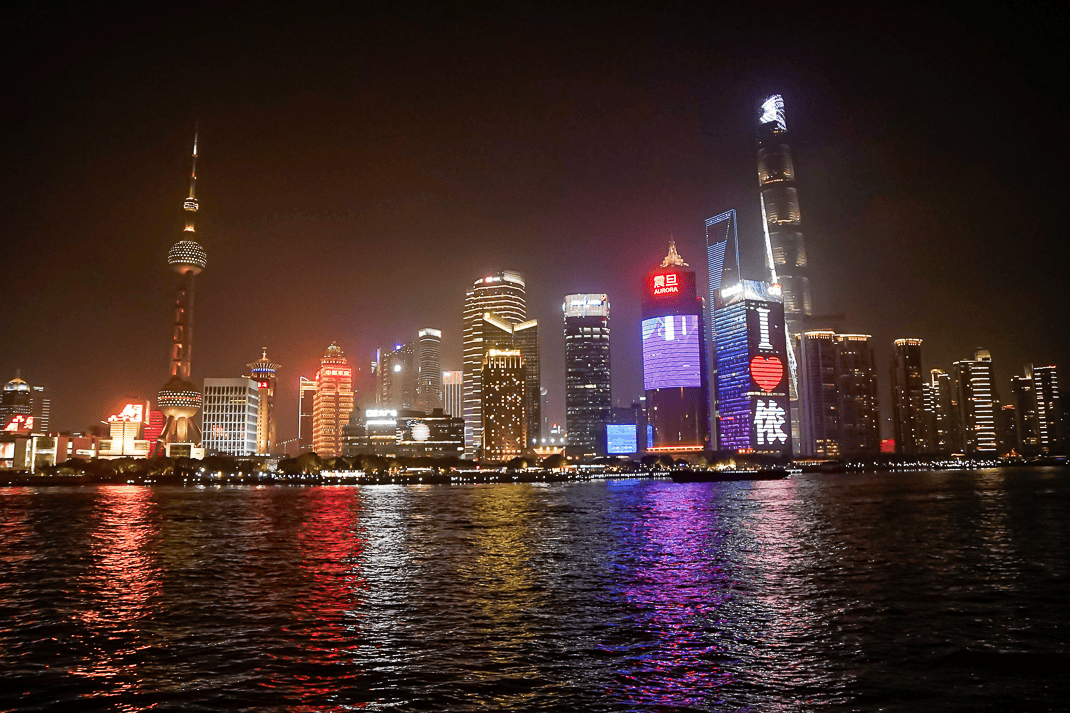
(This is the last of a series of blogs on Japan and Shanghai.)
SHANGHAI – So China still calls itself a communist country, huh? Then why am I staring out at a skyline that makes my old home of Las Vegas look like Dodge City, Kansas?
Across Shanghai’s Huangpu River I see four buildings at least 1,380 feet (421 meters) high, all lit up like Christmas trees. Throw in five five-star hotels to fill in the gaps and you have a skyline that looks like one giant slot machine, all flashing lights and bells and whistles.
This is what Mao Zedong had in mind when he said, “We must treasure our manpower and material resources, and must not take a short view and indulge in wastefulness and extravagance”?

Mao said that in 1945, his third year as leader of China’s Communist Party and marching a strict Marxist line. He and ol’ Karl are likely as confused as I am, standing on a long, wide, stone promenade, in one of the world’s five remaining communist countries, staring out at capitalism run amok.
Shanghai was not a destination. It was a mandatory layover on our recent China Eastern Airlines flight to and from Tokyo. It was cheaper than direct flights and on our return home to Rome it included a 17-hour layover in China’s economic engine. How do you spend 17 hours in the world’s third largest city of nearly 30 million people?
First, you need a way to leave the airport.
Entering Shanghai
China has made that easy. Embracing tourism as it has so many other profitable enterprises, China allows free 24-hour visas. I called the Chinese Embassy in Rome and the nice lady said just ask for the visa at the airport when you go through immigration.
Just don’t be gone more than 24 hours.
Not wanting a €65-€1,300 fine (it’s 5-15 days in a detention camp if it’s longer than a month), I carefully planned our brief itinerary.

We landed at Hongqiao, Shanghai’s northern airport, at 5:10 p.m. after our 3 ½-flight and took a reasonably priced taxi to our hotel. Shanghai is massive. I remember covering the 2008 Beijing Olympics and taking a taxi from the Media Village in the north end of town to the Media Center in the center of the city. With no traffic, part of China’s even-odd license plate mandate during the Olympics, it still took 45 minutes and we were only halfway through town.
Shanghai isn’t that big but the traffic was horrific. It took more than an hour to reach our hotel which gave us plenty of time to try and see the legendary skyscrapers through air pollution thicker than sweet ‘n sour soup. We vaguely saw brown buildings and modern maroon high rises lining the thoroughfares.
We saw nothing green.
Our Campanile Shanghai Bund Hotel was a black monolith that served our purpose just for its location. The Bund is Shanghai’s most famous landmark. From here is where you see Shanghai in its capitalistic glory. It’s a sight so mind blowing I purposely avoided photos in the months leading to our trip.

Shanghai food
If we had one meal in Shanghai, we wanted its signature xiaolongbao. That’s dumplings, big puffy, doughy pastries filled with a variety of food, from pork to fish to vegetables. Marina’s boss once lived in Shanghai and recommended Din Tai Fung, a well-regarded Taiwanese chain.
We overlooked its location in a modern mall and the large, dull room that looked like a communist banquet hall. It had the best sign for a good restaurant: It was filled with locals. Off a long list of dumplings, we ordered the steamed mini sesame paste buns, the sweet, hot black sauce dumplings and the chicken in hot ‘n sour sauce. We held up the dumplings with our chopsticks. When we bit into them, the fillings jumped out as if they were spring loaded.
Despite our chins getting scalded, each one was fresh and exploded with flavor. Washed down with Tsingtao beers, it reminded me of the spectacular breadth of Chinese cuisine I experienced in Beijing.
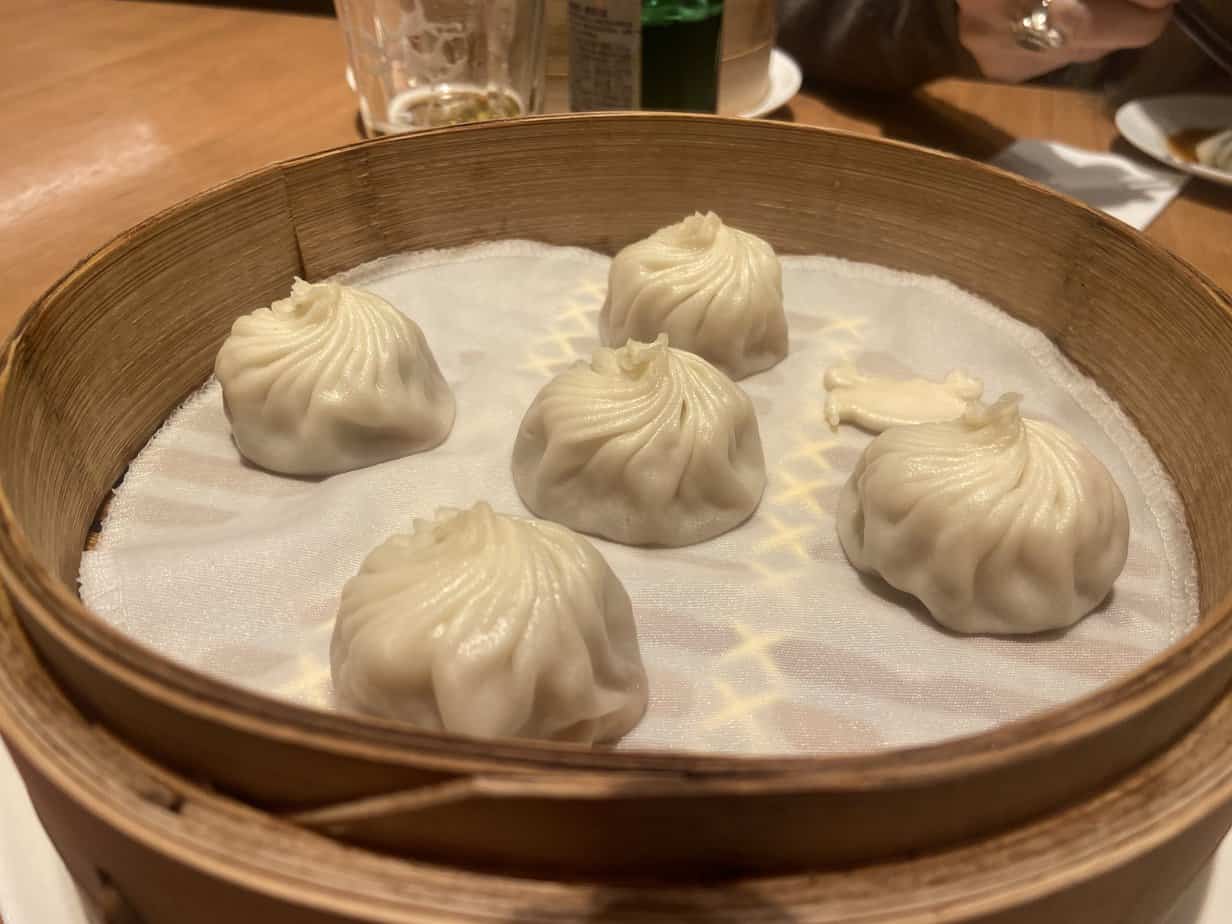
The Bund was about a 15-minute walk from our hotel. The trail went along a dark road under an overpass. We passed convenient stores and boarded-up buildings and one homeless person, huddling in a dark corner.
Lujiazui
The road ended at a major intersection on the edge of the Huangpu River. When we crossed the street, Shanghai’s skyline lit up my eyes like I’d been in a dark cave all day. Across the river, covering the entire horizon, was the financial district called Lujiazui. It was nothing but neon hanging off skyscrapers that lined the river bank like multi-colored candles burning flames to the heavens.
I’m glad I avoided photos. Shanghai’s wow factor isn’t up there with the Taj Mahal but it’s close enough to make a 17-hour layover well worth the hassle, especially with a free visa.
On the left was the 1,535-foot (468-meter) Oriental Pearl Tower, with its signature needle sticking up from two giant balls. There’s the 1,614-foot (492-meter) Shanghai World Financial Center, looking like a giant razor blade scraping the sky.
Towering over all of them is the 2,073-foot (632-meter) Shanghai Tower, the tallest building in China and third tallest in the world. Built in 2015, it’s a curved, 128-floor tower that looks twisted into the earth.
On the promenade where we stood, slack jawed, thousands of people strolled in the 55-degree night. Chinese women dressed to the nines. Businessmen in Brooks Brothers suits. Tourists in comfortable shoes. We all walked up and down the stone walkway, laughing, gawking, talking, reveling in the center of China’s powerful economic engine

As Chiang Kai-shek once said, “The rise or fall of Shanghai means the birth or death of the whole nation.”
China’s military leader and head of the Republic of China from 1928-1949, Chiang Kai-shek could’ve been speaking about Shanghai today. It is the missile that in the last 30 years has made China skyrocket from a backward, stagnant, poverty-stricken global gorilla to the No. 2 economic power in the world.
Shanghai fun facts
Some things you probably don’t know about Shanghai but what explains China’s rise and economic threat to the U.S:
- Metro Shanghai produces an annual gross metropolitan product of $1.3 trillion.
- It is home to 12 Fortune 500 companies.
- It has the sixth most skyscrapers in the world with 189 (Hong Kong is first with 554).
- It has the fourth most billionaires in the world with 65 (New York is first with 101) with a total wealth of $1.8 trillion.
- It has the world’s fourth-largest stock exchange. (New York is first.)

As The New Yorker’s Patricia Marx wrote, “New York may be the city that never sleeps, but Shanghai doesn’t even sit down, and not just because there is no room.”
The history
So how did Shanghai grow into a global economic giant under the guise of a communist government? It started with the death of Mao in 1976. Deng Xiaoping inherited a country treading water in rising seas. Its smaller neighbors Japan, South Korea, Singapore and even Taiwan, its ornery stepchild, had passed it economically. Fifty percent of China’s 916 million people were at or below the poverty line.
Deng knew reforms were needed. His first steps were the de-collectivization of agriculture, opening the country to foreign investment and giving Chinese permission to open businesses. In the late 1980s and ‘90s, he privatized state-owned industries and lifted price controls and protection policies.
By 2001, China joined the World Trade Organization and by 2005, 70 percent of China’s GNP came from the private sector. From 1978-2013, China’s economy increased by 9.5 percent per year.
According to the World Bank, in the last 40 years, China has decreased the number of people making below $1.90 a day by nearly 800 million.
Driving this hard-charging Ferrari is Shanghai. Sitting on China’s eastern shore at the confluence of the Yangtze and Huangpu rivers, its location made it Asia’s financial and commercial hub since the 1930s.
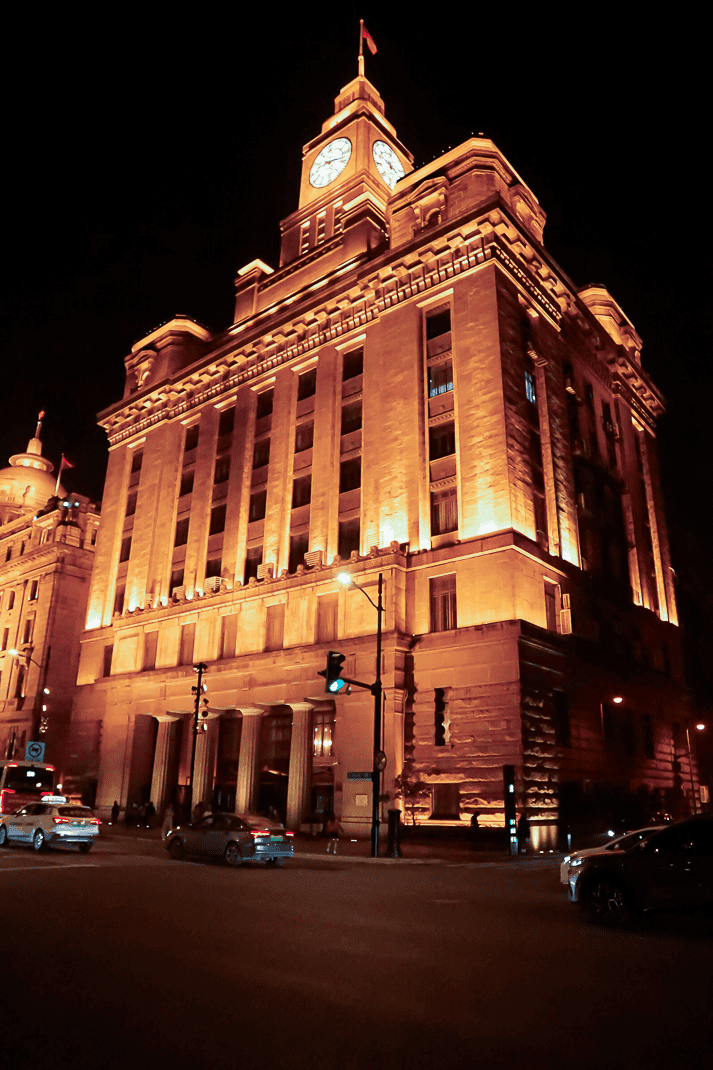
We could still see old Shanghai on our side of the Bund. Lining Zhongshan Road E-1 were beautiful colonial buildings of yellow stone. We passed by the legendary Custom House with four massive columns out front; the former HSBC Building, now the SPD Bank; and the Shanghai Pudong Development Bank, with giant granite lions protecting the entrance.
In 1992, construction started on the other side of the river, where once fishermen lived during the Ming Dynasty. The Oriental Pearl Radio & Telegraph Tower opened in 1999 and then in the 21st century each architect tried to outdo each other.
No city shows its old and new side better than Shanghai.
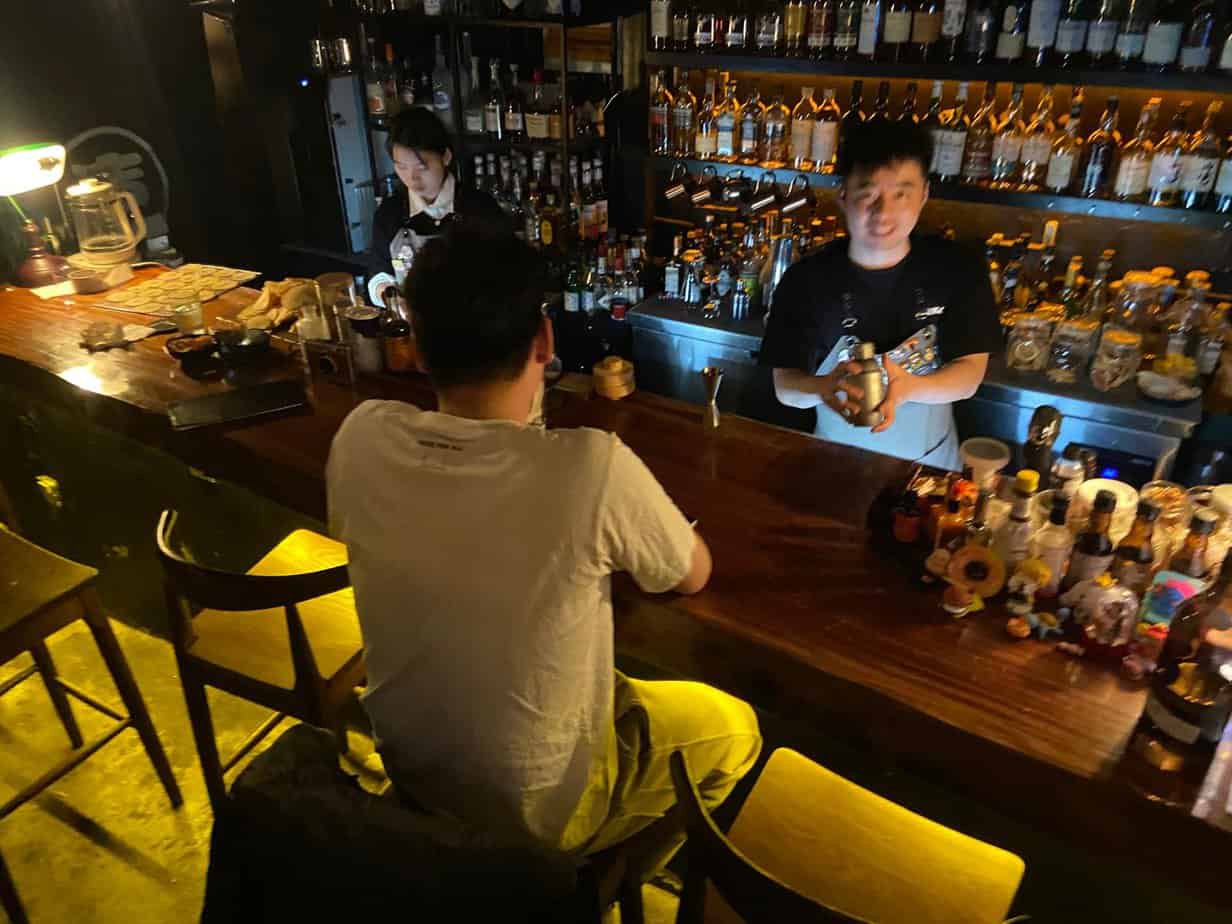
The communist question
We walked back to our hotel and stopped at the dive corner bar. The Wolfpack had a crude concrete floor, a dark balcony and a sunken bar area. Over the din of pop music, I asked Marina, “Is this really a communist country anymore?”
Not really. It’s communist in name only. The Chinese have different names for it. Neoliberal globalization. Twenty-first century Marxism. Socialist market economy. It seems the working title, penned by current president Xi Jinping, is “socialism with Chinese characteristics.”
After the Berlin Wall fell and the communist world crumbled around China, it knew it needed a new economic system but liked its Chinese Communist Party. If the people didn’t, they weren’t saying much. Free speech was and still is an overt crime, which alone keeps the “communism” tag hanging over the country.
China integrated capitalist elements into the political economy to adapt to the changing world in the 1990s. Call it communist hypocrisy. I do. But the Chinese don’t seem to care. They’re not living on $1.90 a day anymore.
“The Chinese Communist Party remains the country’s ultimate authority, so ‘communist’ must remain in the country’s name to maintain the legitimacy of the party’s claim to supreme power,” Matthew Bryza, a former US diplomat to Azerbaijan, a former Soviet republic, told TRT World. “As with all communist parties, over time, greed and self-interest eventually became more important to the Chinese Communist Party’s leadership than ideology.”
Seventeen hours isn’t enough to blanket judge a city. But between the smog, the concrete and the notorious heat in the summer, Shanghai would be a very difficult adjustment, despite all its modern trappings and economic advantages. It makes Rome look like a national forest.
The next morning we took a taxi to Pudong, Shanghai’s airport on its southern side. During the hour ride we passed nothing but huge apartment buildings, more skyscrapers and concrete, all barely visible through the nasty smog. We didn’t see so much as a patch of grass. Forget the sun.
Somewhere, I think I heard Mao Zedong and Karl Marx coughing up a lung.
World’s most populated cities
- Tokyo 37.1 million
- Delhi 33.8 million
- Shanghai 29.9 million
- Dhaka, Bangladesh 23.9 million
- Sao Paulo 22.8 million
- Ciaro 22.6 million
- Mexico City 22.5 million
- Beijing 22.2 million
- Mumbai, India 21.7 million
- Osaka, Japan 19 million
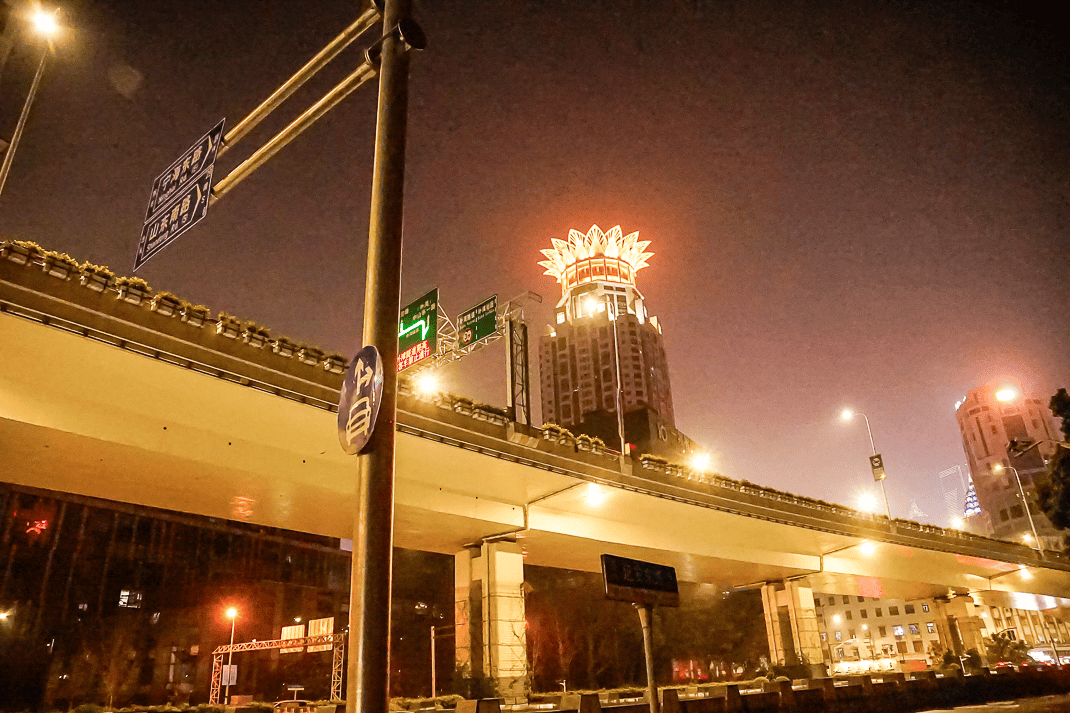
If you’re thinking of going …
Where to stay: Campanile Shanghai Bund Hotel, No. 33 Fujian South Road, Huangpu District, 86-21-632-60505, https://shanghai-bund.campanile.com/en-us/#The%20Hotel. Simple convenient four-star hotel located in heart of city, only a 15-minute walk from the Bund. I paid €66 for one night including an excellent buffet breakfast.
Where to eat: Din Tai Fung, 86-21-6385-8378, 10 a.m.-10 p.m. Taiwan-based chain has seven locations in Shanghai. We ate at the one closest to the Bund. Taiwanese and Shanghai specialities including an entire page of dumplings. High quality of food makes up for sterile surroundings. I paid €48 for two.
When to go: Like Rome, any month but July and August. In summer Shanghai has average highs of 90 with more than 80 percent humidity. January lows are mid-30s with highs in mid-40s. On our night it was mid-50s. Perfect.
For more information: Shanghai Call Center, 86-021-962-288. English-language tourist information center is first of its kind in China.
China National Tourist Office, 350 Fifth Ave., Ste. 6413, New York, 1-212-760-8218, www.cnto.org, ny@cento.gov.en


April 24, 2024 @ 7:41 pm
Loved your Shanghai breakdown! You need your own show in the states. DD
April 25, 2024 @ 8:07 am
Thanks, Dennis. I know video is the way to go but I don’t have the knowledge, personality or patience to do it. I tried. But at the end of trips, when I want to sit back on my last day and relax, I’d say to myself, “Oh, dammit! I have to do a damn standup.”